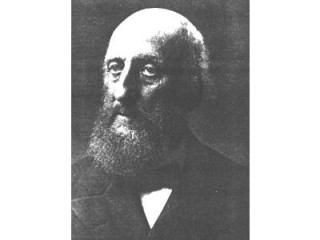
James Renwick biography
Date of birth : 1818-11-01
Date of death : 1895-06-23
Birthplace : New York City, New York, U.S.
Nationality : American
Category : Arhitecture and Engineering
Last modified : 2011-07-19
Credited as : Architect, St. Patrick's Cathedral,
James Renwick was born on Nov. 1, 1818, in New York City. His father was a professor at Columbia College and an engineer. In 1836 James graduated from Columbia College. Following his father's example, he turned to engineering as a profession, taking a position with the Erie Railroad and then supervising construction for the Croton reservoir and aqueduct.
Renwick abruptly shifted to architecture by winning the competition for Grace Church (1843-1846) at Broadway and 10th Street in New York City. The design of the church, mainly late English Gothic in style, is remarkably coherent, except for the spire that was added later to replace the earlier wooden one. Following this success, he gained many commissions for churches in New York, such as Calvary Church (1846), Church of the Puritans (1846), Saint Bartholomew's (1872), and Saint Patrick's Cathedral (1853, dedicated 1879, completed 1887). Saint Patrick's is generally considered his finest church. Its west facade is as well composed as any Gothic revival building in America.
The Smithsonian Institution (1846-1855), Washington, D.C., though burned in 1865 and repaired by another architect, is as interesting a design as any conceived by Renwick. In its complete lack of harmony with the established classical style of the Mall, this building has an aura of romance, of a colorful fairyland of picturesque angles, turrets, towers, and gingerbread decorations. Also in Washington, Renwick built the first Corcoran Gallery of Art (1859), which became the U.S. Court of Claims. Built of brick and brown stone, it is well proportioned and owes much to Jacques Lemercier's work on the Louvre in Paris. This is noticeable in the square dome, mansard roof, and imitative decoration.
Secure in his profession, Renwick was commissioned to build banks, hotels, and many private residences for well-to-do clients in New York, Staten Island, and Newport, R.I. In order to meet these obligations, he hired several young architects, among them John W. Root and Bertram Goodhue. (Both men were recognized as superior in the next generation.)
The Charity Hospital on Welfare Island in New York City (1858-1861), though esthetically unsuccessful, was considered otherwise by the Board of Governors, who commented that "Its truly magnificent structure presents the appearance of a stately palace." Renwick based this design on the Tuileries Palace in Paris. Its gray stone was quarried by prisoners on Welfare Island; its quoins and lintels were of a lighter shade, and purple slate covered the roof. He designed the first major building for Vassar College, Poughkeepsie, N.Y. (1860-1861). Built of red brick, with blue stone trim and a green and purple mansard roof, the structure is chiefly noted for its fireproofing, central heating from a separate building, cast-iron columns, and colorful, though awkward, appearance. Renwick died in New York City on June 23, 1895.



















